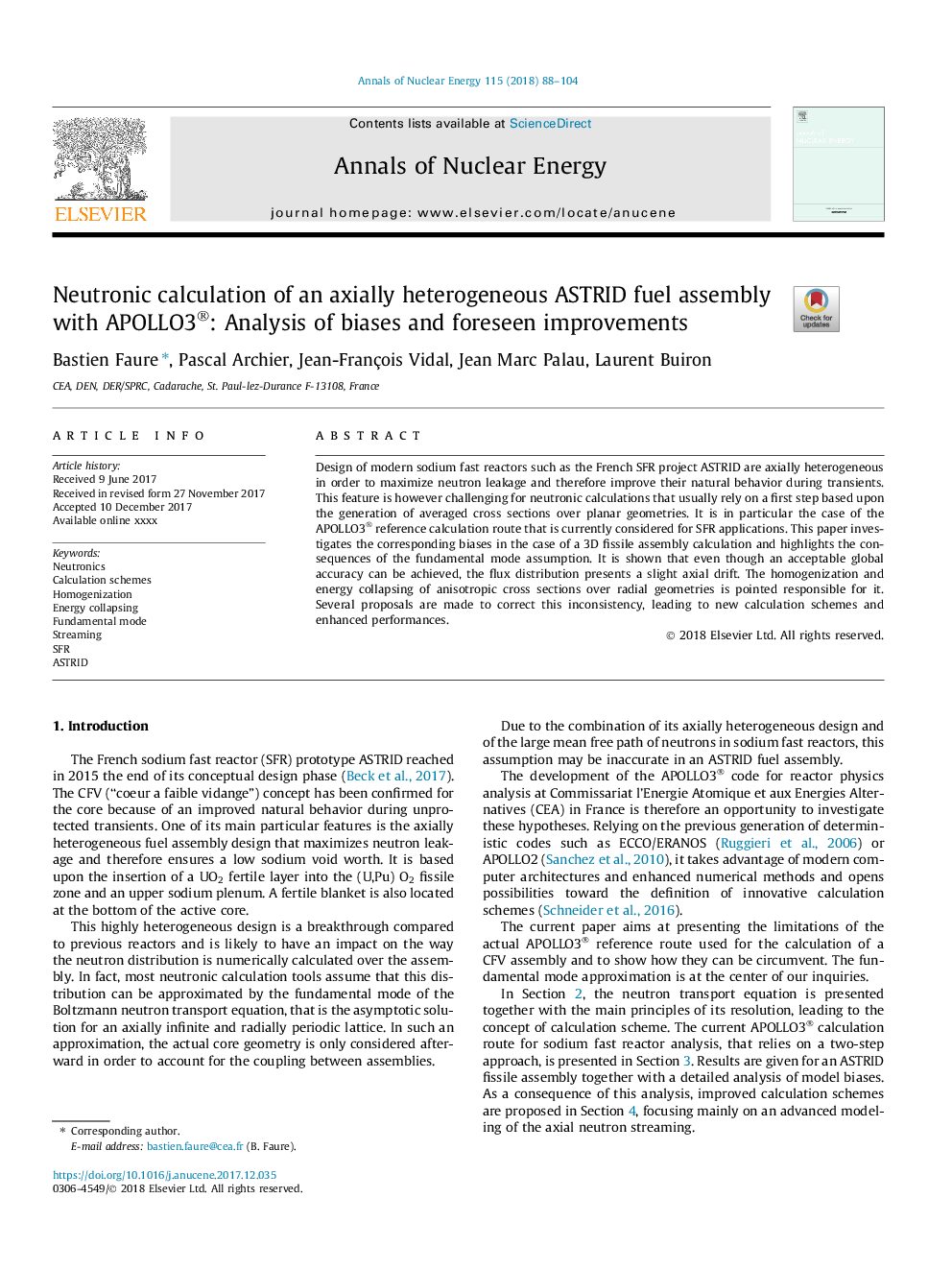| Article ID | Journal | Published Year | Pages | File Type |
|---|---|---|---|---|
| 8067056 | Annals of Nuclear Energy | 2018 | 17 Pages |
Abstract
Design of modern sodium fast reactors such as the French SFR project ASTRID are axially heterogeneous in order to maximize neutron leakage and therefore improve their natural behavior during transients. This feature is however challenging for neutronic calculations that usually rely on a first step based upon the generation of averaged cross sections over planar geometries. It is in particular the case of the APOLLO3® reference calculation route that is currently considered for SFR applications. This paper investigates the corresponding biases in the case of a 3D fissile assembly calculation and highlights the consequences of the fundamental mode assumption. It is shown that even though an acceptable global accuracy can be achieved, the flux distribution presents a slight axial drift. The homogenization and energy collapsing of anisotropic cross sections over radial geometries is pointed responsible for it. Several proposals are made to correct this inconsistency, leading to new calculation schemes and enhanced performances.
Related Topics
Physical Sciences and Engineering
Energy
Energy Engineering and Power Technology
Authors
Bastien Faure, Pascal Archier, Jean-François Vidal, Jean Marc Palau, Laurent Buiron,
